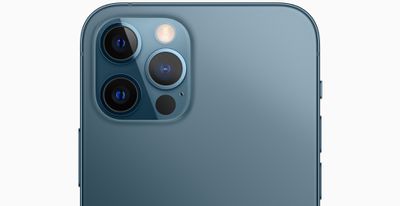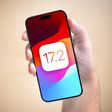In 2020, Apple unveiled the iPhone 12 and iPhone 12 Pro as the successors to the iPhone 11 and iPhone 11 Pro, with a new squared-off industrial design, the A14 Bionic chip, OLED displays, and MagSafe across the lineup.

The iPhone 12 starts at $599, and while the iPhone 12 Pro has now been discontinued, it is sometimes available from some third-party stores for prices well below $999. As these iPhones share a large number of features, should you consider purchasing the lower-cost model to save money, or opt for the high-end Pro model? Our guide helps to answer the question of how to decide which of these two iPhones is best for you.
Comparing the iPhone 12 and the iPhone 12 Pro
The iPhone 12 and iPhone 12 Pro share an overwhelming majority of features, such as display size, processor, and 5G. Apple lists these same features of the iPhone 12 and iPhone 12 Pro:
Similarities
- 6.1-inch Super Retina XDR display with 2532-by-1170-pixel resolution at 460 ppi, featuring HDR, True Tone, P3 Wide Color, and Haptic Touch
- A14 Bionic chip
- Sub-6GHz 5G connectivity (and mmWave in the U.S.)
- 12MP Ultra Wide and Wide cameras
- Face ID
- Battery life with up to 17 hours of video playback
- Ceramic Shield front
- Water resistant to a depth of six meters for up to 30 minutes
- Compatible with MagSafe accessories and wireless chargers
- Available in 128GB and 256GB
- Lightning connector
Apple's breakdown shows that the iPhones share a number of notable features. Even so, there are some key differences between the iPhone 12 and iPhone 12 Pro, including the LiDAR Scanner and Telephoto Lens.
Differences
iPhone 12
- 6.1-inch Super Retina XDR display with 625 nits max brightness
- Aerospace-grade aluminum
- 12MP Ultra Wide and Wide camera lenses
- Optical image stabilization
- 2x optical zoom out, 2x optical zoom range, and digital zoom up to 5x
- Dolby Vision HDR video recording up to 30 fps
- Available in 64GB, 128GB, and 256GB
- Available in Blue, Green, PRODUCT(RED), White, Black, and Purple
- 4GB of memory *
iPhone 12 Pro
- 6.1-inch Super Retina XDR display with 800 nits max brightness
- Surgical-grade stainless steel
- 12MP Ultra Wide, Wide, and Telephoto camera lenses
- Dual optical image stabilization
- 2x optical zoom in, 2x optical zoom out, 4x optical zoom range, and digital zoom up to 10x
- Dolby Vision HDR video recording up to 60 fps
- Apple ProRAW and Night mode portraits
- LiDAR Scanner for Night mode portraits, faster autofocus in low light, and next-level AR experiences
- Available in 128GB, 256GB, and 512GB
- Available in Pacific Blue, Gold, Graphite, and Silver
- 6GB of memory *
Note that the iPhone 12 Pro Max provides a few additional improvements over the iPhone 12 Pro beyond a much larger 6.7-inch display. The iPhone 12 Pro Max also offers a wider optical zoom range, sensor-shift optical image stabilization, a telephoto lens with a larger aperture, and longer battery life.
Read on for a closer look at each of these aspects, and see what exactly both iPhones have to offer.
Design and Colors
The iPhone 12 and iPhone 12 Pro both have a squared-off industrial design with a flat band around the sides. The dimensions of both devices are identical, although the iPhone 12 is 25 grams lighter. More noticeable is the use of different materials and finishes.
The iPhone 12 uses aerospace-grade aluminum on the edges and a single piece of polished glass on the rear, while the iPhone 12 Pro uses surgical-grade stainless steel on the edges and a single piece of matte glass on the rear.

The two devices also use completely different color palettes. The iPhone 12 is available in Blue, Green, PRODUCT(RED), White, Black, and Purple, while the iPhone 12 Pro is available in Pacific Blue, Gold, Graphite, and Silver.

The iPhone 12 Pro espouses a more luxurious appearance, but the iPhone 12 still looks like a premium device. As the designs are so similar, and only vary in terms of color options and materials, preference for the iPhone 12 or 12 Pro will come down to personal taste.
Cameras
The main difference between the iPhone 12 and iPhone 12 Pro is the rear camera setup. The iPhone 12 has a dual 12MP camera system with Ultra Wide and Wide lenses. This facilitates a two-times zoom out. On the other hand, the iPhone 12 Pro has a 12MP camera system with Ultra Wide, Wide, and Telephoto lenses. This allows it to offer a two-times zoom in and a two-times zoom out. For video, iPhone 12 Pro can record HDR video with Dolby Vision up to 60 fps, but iPhone 12 can only do this up to 30fps.
The iPhone 12 Pro also has a LiDAR Scanner, which allows for Night mode portrait photos and enhanced AR experiences.

Beyond hardware, the two devices offer different camera software features. iPhone 12 can use digital zoom to zoom in up to five times, but iPhone 12 Pro doubles this to a ten times digital zoom. iPhone 12 Pro can also capture photos using "Apple ProRAW," a new RAW file format that takes full advantage of the device's rear cameras.

iPhone 12 Pro clearly provides a more capable and fully-featured camera experience, so users who prioritize photo and video capabilities should get the more expensive device, and even consider the iPhone 12 Pro Max. However, beyond the telephoto lens, many of these features, such as Apple ProRAW and LiDAR, will not be important to the majority of users. For most people, the iPhone 12's camera setup will be more than sufficient, and still offers a range of significant advances, such as HDR video recording with Dolby Vision, Night mode time-lapses, and front-facing Night mode and Deep Fusion.
Other iPhone Options
If you feel that the iPhone 12 is slightly out of your budget, and you do not need the new industrial design, 5G connectivity, the latest A14 chip, or OLED Super Retina XDR display, you may wish to consider the iPhone 11. The iPhone 11 uses the same materials as the iPhone 12, has the same 6.1-inch screen size, and starts at $499. The iPhone 11's A13 chip and dual-camera setup are still highly capable for day to day use.

iPhone 12 Pro Max
If you feel that the iPhone 12 Pro is too small or you want the absolute best iPhone camera available, you may wish to consider the iPhone 12 Pro Max. The iPhone 12 Pro Max boasts a much larger 6.7-inch display, and comes with a wider optical zoom range, sensor-shift optical image stabilization, a telephoto lens with a larger aperture, and longer battery life.
Final Thoughts
Overall, the iPhone 12 Pro offers minor advancements over the iPhone 12 in terms of materials and the rear camera. The iPhone 12 Pro is around $100 to $200 more than the iPhone 12, and many people will find it difficult to justify the additional cash simply for more premium materials and a better rear camera setup. Those opting for the iPhone 12 Pro will be seeking the most premium iPhone, or be interested in specific features such as the LiDAR Scanner or the Telephoto lens.
Since the two phones share a large majority of features, including design, an OLED Super Retina XDR display, 5G connectivity, the A14 Bionic chip, battery life, and MagSafe, it is difficult to actively recommend the more expensive model. As the improvements of the iPhone 12 Pro are minor and specific, most people should get the iPhone 12.
One caveat to this recommendation is if you have a need for more than 64GB of storage. The iPhone 12 starts at 64GB for the base model while the iPhone 12 Pro starts at 128GB. If you want or need 128GB or more, then the price gap closes between the models.























Top Rated Comments
KEY Differences
iPhone 12
* 12MP Ultra Wide and Wide camera lenses
* Optical image stabilization
* 2x optical zoom out, 2x optical zoom range, and digital zoom up to 5x
* Dolby Vision HDR video recording up to 30 fps
* 4GB of RAM * ('https://www.macrumors.com/2020/10/14/how-much-ram-iphone-12-pro-has/')
iPhone 12 Pro
* 12MP Ultra Wide, Wide, and Telephoto cameralenses
* Dual optical image stabilization
* 2x optical zoom in, 2x optical zoom out, 4x optical zoom range, and digital zoom up to 10x
* Dolby Vision HDR video recording up to 60 fps
* LiDAR Scanner for Night mode portraits, faster autofocus in low light, and next-level AR experiences
* 6GB of RAM * ('https://www.macrumors.com/2020/10/14/how-much-ram-iphone-12-pro-has/')
So really, it's just $120 more for telephoto, higher frame rate, LiDAR, and more RAM.
2: if they are correct, the iPhone 12 has 4GB RAM and the Pro has 6GB.
To me personally, having stainless steel and the extra 2GB of RAM is enough to go pro, especially since I intend to keep it until it’s unusable.